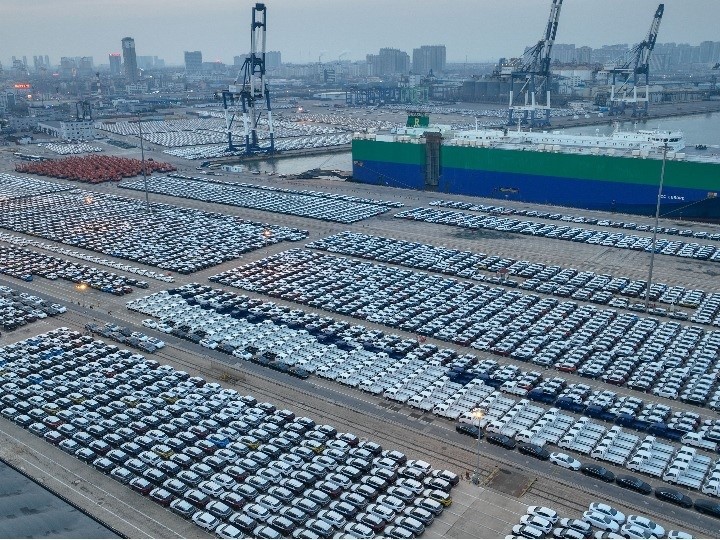In the fierce competition in the global automotive market, Chinese automakers have achieved remarkable results in Russia. According to the Russia A-souz website, the market share of Chinese brands in Russia has exceeded 60%, which is not only shocking to the industry, but also marks the remarkable results of the internationalization strategy of China's automotive industry.
1. Cost-effective: the core competitiveness of Chinese automobiles
The reason why Chinese cars can succeed in the Russia market is that high cost performance is one of their core competitiveness. Taking the Haval first love series as an example, this compact SUV is priced at 2.779 million rubles (about 232,000 yuan) in Russia, equipped with a 1.5T turbocharged four-cylinder engine, and has become the top three models sold in the local market in June. In addition, Chinese car brands such as Chery and Geely occupy 9 of the top 10 car brands in Russia, showing the widespread popularity of Chinese cars in the local market.
2. Technological innovation: the differentiated advantages of Chinese automobiles
Technological innovation is another major advantage of Chinese cars in the Russia market. Chinese auto brands have not only achieved success in the field of fuel vehicles, but also in the field of new energy vehicles. For example, Li Auto sold about 5,000 units in Russia in 2023, becoming the sales champion in the field of electric and hybrid vehicles. The intelligent configuration of Chinese cars, such as automatic parking, on-board refrigerators and color TVs, has refreshed the traditional perception of cars among Russia consumers.

Figure: Chinese cars account for 60% of the Russia market
3. Market adaptability: localization strategy of Chinese automobiles
The success of Chinese automakers in the Russia market is also due to their accurate grasp of local market demand and localization strategies. In the context of the Russia-Ukraine conflict, many multinational auto brands have withdrawn from the Russia market, providing market space for Chinese auto brands. At the same time, Chinese automakers are actively taking over the network of high-quality dealers in Russia, opening 487 new sales stores in 2022 alone, effectively filling the gap in the market.
4. Challenges and future prospects
Despite the remarkable achievements of Chinese cars in the Russia market, they still face some challenges. The first is the issue of design adaptability, and the cold climate of Russia has put forward higher requirements for the design and testing of Chinese cars. In addition, as European, American, Japanese and Korean brands may return to the Russia market, Chinese automakers need to strengthen brand building and market competitiveness to maintain their market share.
In the future, the continued success of Chinese automobiles in the Russia market will depend on their continuous investment and improvement in technological innovation, brand building and market adaptability. By strengthening technology research and development, improving product quality, and deepening localization strategies, Chinese automakers are expected to achieve long-term development in Russia and the global market.
Conclusion
The 60% market share of Chinese automakers in the Russia market is an important milestone, which not only proves that the internationalization strategy of China's auto industry has achieved practical results, but also provides valuable experience for the further development of Chinese automakers in the global market. In the face of future challenges, Chinese automakers need to continuously strengthen their own capabilities and enhance brand influence to achieve sustainable development. With the continuous progress of China's automotive technology and the continuous development of the market, we have reason to believe that Chinese automobiles will continue to gain a firm foothold in Russia and even the global market and win the favor of more consumers.





